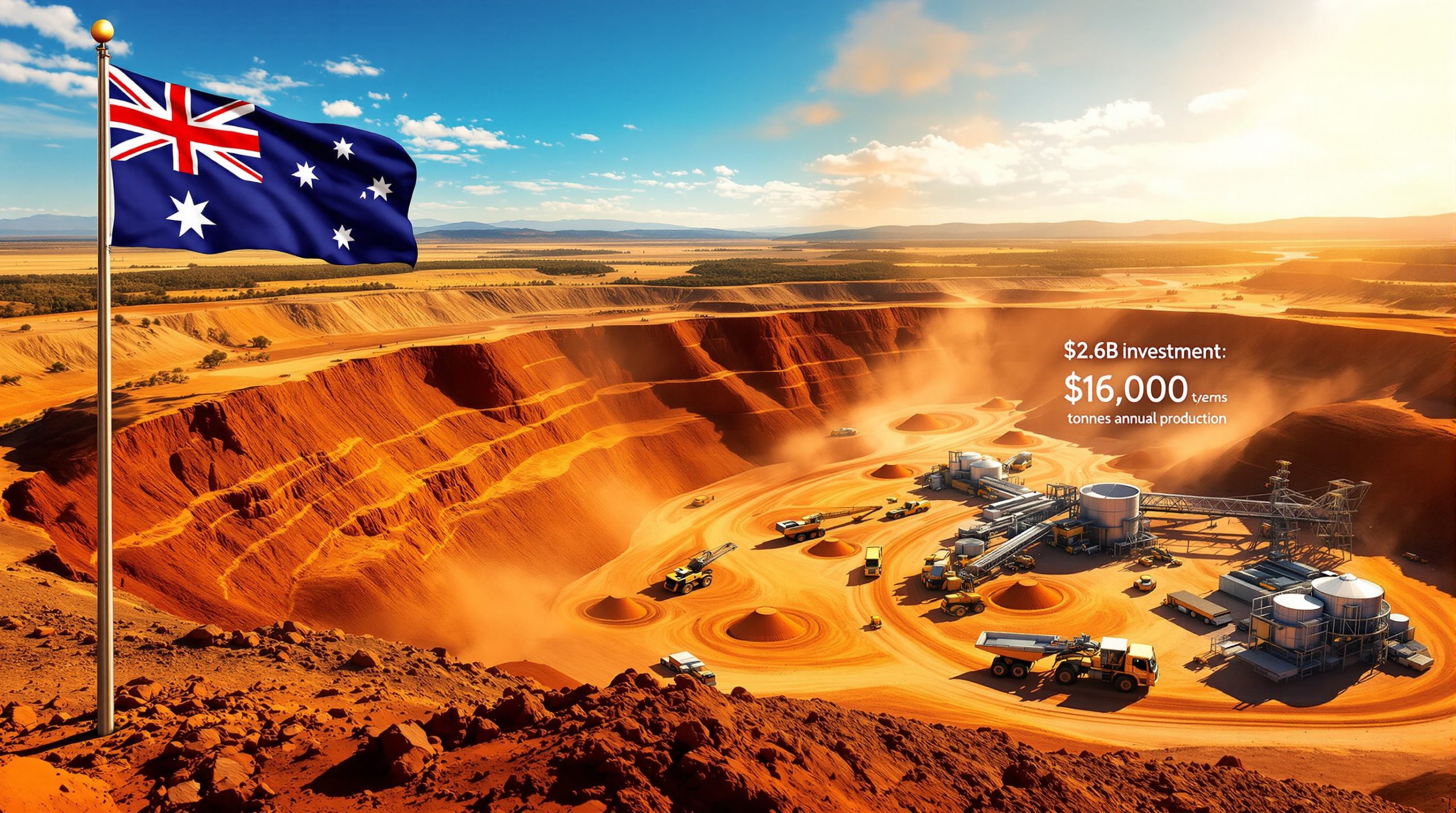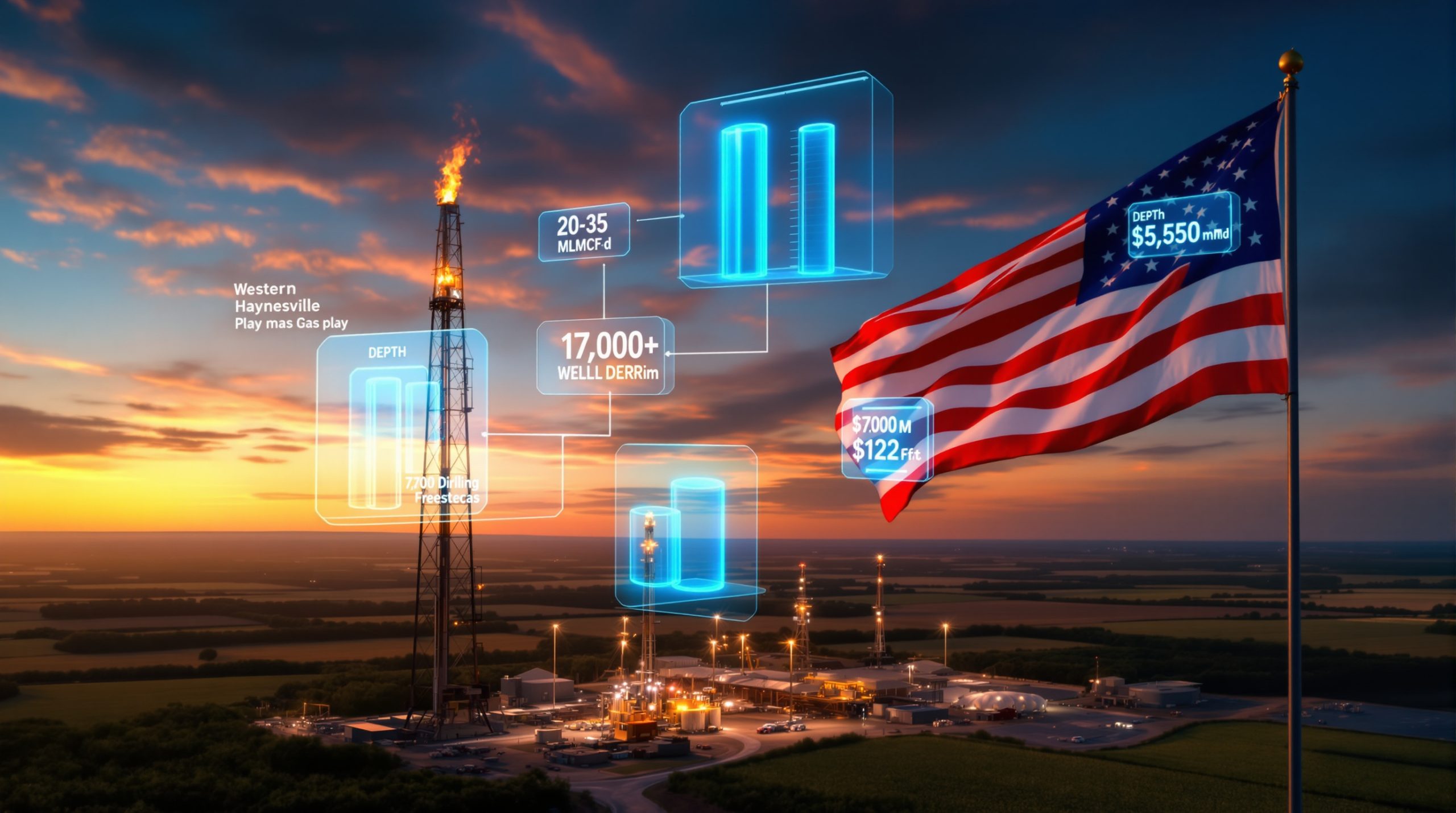The Rise of Queensland's Mining Powerhouse
The global copper market stands at a critical inflection point as supply constraints tighten across traditional mining regions while renewable energy infrastructure drives unprecedented demand growth. Against this backdrop, Australia's resource sector witnesses the emergence of transformative developments that could reshape the nation's position in critical minerals strategy.
Queensland's northwest mining corridor, long dominated by established operations around Mount Isa, now attracts billions in fresh capital as mining companies position themselves for the next commodity super cycle. The convergence of geological opportunity, infrastructure access, and government policy creates conditions that mining executives describe as once-in-a-generation investment opportunities.
What Makes the Eva Copper Project Queensland's Most Significant Mining Investment?
Project Scale and Economic Fundamentals
Harmony Gold Mining's Eva copper development represents the largest new metal mining investment commitment in Queensland's recent history. The $2.3-2.6 billion capital deployment positions the harmony copper project Queensland among Australia's most significant greenfield mining developments of the past decade.
The project's economic foundation rests on a 2 million tonne copper resource situated 75 kilometers north of Cloncurry, strategically positioned within the established Mount Isa mining corridor. This location provides immediate access to existing infrastructure networks, reducing typical greenfield development costs and timeline risks.
The 15-year mine life projection, with potential for extension, creates a foundation for sustained cash flow generation across multiple commodity cycles. Industry analysts note that modern copper mines achieving 15-plus year operational timelines represent rare assets in an environment where many established operations face declining ore grades.
Production Capacity and Revenue Projections
Eva's production profile demonstrates the scale required for global market relevance. The project targets 65,000 tonnes of copper concentrate annually during its first five operational years, transitioning to a sustained 60,000 tonnes of copper plus 19,000 ounces of gold thereafter.
This dual-commodity approach provides portfolio diversification benefits, reducing exposure to single-metal price volatility. Furthermore, the copper price insights suggest both metals play crucial roles in renewable energy infrastructure and traditional store-of-value applications.
The project's all-in-sustaining cost target of US$2.50 per pound positions Eva within the lowest-cost quartile of global copper production. This cost structure provides operational flexibility across commodity price cycles, maintaining profitability even during market downturns.
Annual ore processing capacity of 18 million tonnes supports the sustained production targets while creating potential for throughput optimization as operational experience develops. The conventional flowsheet technology reduces processing risks typically associated with novel metallurgical approaches.
How Does the Eva Project Transform Queensland's Mining Landscape?
Regional Economic Integration Analysis
The Queensland Government's $20.7 million conditional funding through the Mount Isa Mining Acceleration Program signals strategic alignment between state policy and private sector investment priorities. This prescribed project status provides regulatory streamlining and development timeline advantages for the harmony copper project Queensland.
Eva's integration with Traditional Kalkadoon lands requires structured Indigenous engagement protocols, establishing frameworks that could serve as templates for future mining developments in the region. These partnerships become increasingly critical as mining companies navigate social license requirements.
The project's positioning within the Mount Isa mining corridor creates opportunities for infrastructure sharing and operational synergies. Existing transportation networks, power supply systems, and skilled workforce availability reduce typical greenfield development challenges.
Supply Chain and Processing Innovation
The 18 million tonne annual processing capacity utilizes proven conventional technology, minimizing technical risks during ramp-up phases. This approach contrasts with experimental processing methods that have challenged other recent mining developments.
In addition, the Harmony Eva Copper Mine project utilizes open-cut mining methodology which further reduces operational complexity compared to underground extraction methods. The surface mining approach enables conventional equipment utilization and standard operational practices, supporting consistent production delivery.
Multiple pit development strategies optimize resource extraction efficiency while providing operational flexibility. This approach allows mining engineers to adapt extraction sequences based on commodity prices, ore grades, and operational conditions.
What Timeline Factors Drive the Eva Copper Development Schedule?
Construction and Development Phases
Following final investment decision approval in November 2025, Eva's 30-month construction timeline targets first production during the second half of 2028. This timeline aligns with industry standards for comparable-scale copper developments.
The construction sequence prioritizes critical infrastructure development, including access roads, accommodation facilities, and administration buildings. Processing plant installation and commissioning represents the longest-lead construction activity, requiring coordination with equipment manufacturers and specialized contractors.
| Development Phase | Timeline | Key Activities |
|---|---|---|
| Site Preparation | Months 1-6 | Access roads, utilities, accommodation |
| Infrastructure | Months 4-18 | Processing plant construction, tailings facility |
| Equipment Installation | Months 12-24 | Concentrator commissioning, mining fleet delivery |
| Commissioning | Months 24-30 | Production ramp-up, optimization |
Infrastructure Development Requirements
Site infrastructure development encompasses multiple concurrent work streams. Access road construction enables equipment delivery while accommodation facility establishment supports construction workforce requirements.
Processing plant installation represents the most technically complex construction phase, requiring specialized contractors and extended equipment procurement timelines. Concentrator systems typically require 12-18 months from order to commissioning.
The tailings storage facility construction follows strict environmental protocols, particularly given Queensland's regulatory environment for mining waste management. These facilities require specialized engineering design and construction methodologies.
How Does Harmony's Investment Strategy Position Australia's Copper Market?
Global Copper Demand Context
Global copper supply faces structural constraints as established mines experience declining ore grades while new large-scale developments remain limited. This supply-demand imbalance creates favorable pricing environments for new, low-cost producers.
Australia's copper production capacity expansion aligns with national critical minerals strategy objectives. The federal government identifies copper as essential for renewable energy infrastructure, electric vehicle manufacturing, and grid modernization projects. Consequently, the mining industry evolution reflects this strategic focus on critical minerals.
Eva's production capacity will contribute meaningfully to Australia's copper output, currently dominated by operations in South Australia and Western Australia. The project diversifies production geography while adding low-cost capacity.
Capital Efficiency Metrics Analysis
Eva's capital efficiency metric of $40,000 per tonne of annual copper production compares favorably to industry benchmarks. Recent greenfield copper developments typically require $45,000-$55,000 per tonne, positioning Eva advantageously.
| Metric | Eva Copper Project | Industry Average | Eva Advantage |
|---|---|---|---|
| Capital Cost per Tonne | $40,000 | $50,000 | 20% lower |
| AISC (US$/lb) | $2.50 | $3.00 | 17% lower |
| Mine Life | 15+ years | 12 years | 25% longer |
| Annual Production | 60,000t Cu | 45,000t Cu | 33% higher |
The 15-year mine life provides extended cash flow generation compared to shorter-lived operations. This duration enables capital cost recovery across multiple commodity cycles while supporting sustained dividend distributions.
Return on investment projections benefit from both production scale and cost positioning. The combination creates resilience against commodity price volatility while maximizing upside capture during favorable market conditions.
What Risk Factors and Opportunities Define the Eva Project's Future?
Market Risk Assessment
Copper price volatility represents the primary market risk facing Eva's development economics. Historical copper prices demonstrate significant cyclical variation, ranging from $1.50 to $4.50 per pound over recent decades.
The project's US$2.50 per pound AISC provides substantial margin cushion at current copper prices exceeding $4.00 per pound. This cost position enables profitable operation even during commodity price downturns. For instance, recent gold price analysis shows similar volatility patterns across precious metals markets.
Global supply chain disruptions could impact construction timelines and equipment delivery schedules. Recent international logistics challenges highlight vulnerability in specialized mining equipment procurement and transportation.
Currency exchange rate fluctuations between Australian dollars and US dollars create additional complexity. While copper prices receive quotation in US dollars, operational costs occur primarily in Australian dollars.
Expansion Potential and Resource Growth
Eva's resource base provides foundation for mine life extension beyond the initial 15-year timeline. Harmony's management emphasizes potential for continued resource growth through systematic exploration across broader tenement holdings.
The concept of exceptionally low discovery costs suggests geological conditions favorable for additional resource identification. This exploration upside could materially extend operational timeline and increase total project value.
Technology advancement integration offers operational optimization opportunities. Modern mining operations increasingly incorporate automation, remote operations, and artificial intelligence to improve efficiency and reduce costs.
Potential expansion scenarios include:
- Resource extension drilling to identify additional ore zones
- Processing capacity expansion if resource base supports increased throughput
- Secondary mineral recovery from existing ore streams
- Underground development following open-cut completion
How Do Environmental and Regulatory Frameworks Shape Project Development?
Environmental Authority and Compliance
Queensland's environmental approval processes require comprehensive impact assessments covering water resources, biodiversity conservation, and land rehabilitation planning. These regulatory frameworks have strengthened significantly following historical mining environmental incidents.
Water management represents a critical environmental consideration given northwest Queensland's semi-arid climate and seasonal precipitation patterns. Mining operations require substantial water resources for processing while managing environmental discharge requirements.
Tailings storage facility design follows strict engineering standards mandated by Queensland regulators. Recent regulatory changes require enhanced monitoring systems, redundant containment measures, and long-term closure planning.
Biodiversity conservation measures address potential impacts on local flora and fauna. Environmental offset requirements may necessitate conservation investments in surrounding areas to compensate for mining-related habitat disruption.
Government Policy Integration
The prescribed project status designation provides regulatory streamlining benefits while maintaining environmental protection standards. This status enables coordinated approval processes across multiple government agencies.
Federal critical minerals strategy alignment creates policy support for projects contributing to national resource security objectives. Copper's designation as a critical mineral enhances political support for development approval processes.
Indigenous land use agreements require ongoing consultation and benefit-sharing arrangements with Traditional Owners. These agreements establish frameworks for cultural heritage protection, employment opportunities, and community development contributions.
However, the Queensland government's mining project information provides detailed regulatory guidance for developers.
Modern mining operations must demonstrate environmental stewardship while delivering economic benefits to local communities and Traditional Owners through structured partnership arrangements.
What Investment Implications Emerge from the Eva Copper Development?
Shareholder Value Creation Analysis
Harmony Gold Mining's diversification beyond gold operations reflects strategic portfolio optimization amid changing commodity dynamics. The Eva copper project provides exposure to renewable energy megatrends while maintaining precious metals exposure.
Portfolio risk distribution across multiple commodities reduces single-metal price exposure. This diversification strategy becomes particularly relevant as central bank monetary policies influence gold prices independently of industrial metal demand cycles.
Long-term cash flow generation from copper operations creates foundation for sustained dividend payments and capital returns. The 15-year mine life provides visibility into future earnings streams that equity markets value highly.
Expected cash flow profiles demonstrate strong returns across various commodity price scenarios:
- Base case scenario (copper $3.50/lb): Strong positive cash flows throughout mine life
- Downside scenario (copper $2.75/lb): Profitable operation with reduced margins
- Upside scenario (copper $4.50/lb): Exceptional returns supporting accelerated capital returns
Industry Benchmark Comparisons
Eva's competitive positioning becomes apparent through comparative analysis against peer copper developments. The project's scale, cost structure, and resource quality position it favorably within Australian mining investment opportunities.
Capital efficiency metrics demonstrate Eva's attractiveness relative to alternative copper investments. The $40,000 per tonne capital requirement compares favorably to recent Australian copper developments requiring $50,000-$60,000 per tonne.
Operational cost positioning within the lowest quartile of global copper production provides sustained competitive advantages. This cost structure enables profitable operation across commodity cycles while maximizing value capture during favorable pricing periods.
Strategic Implications for Australia's Critical Minerals Future
National Resource Security Contributions
Eva's development contributes meaningfully to Australia's critical minerals strategy implementation. The project's copper production reduces national import dependency while supporting domestic manufacturing capabilities.
Regional economic benefits extend beyond direct mining employment. The project creates demand for specialized services, transportation, and supply chain activities throughout northwest Queensland's economy.
Economic diversification benefits strengthen regional resilience against single-industry dependence. Mining operations provide high-value employment opportunities in areas with limited alternative economic drivers.
International Market Positioning
Asian copper concentrate markets represent primary export destinations for Australian production. These established trade relationships provide secure offtake opportunities for Eva's production output.
Global supply chain integration positions Australia as a reliable supplier to Asian smelting operations. This reliability premium becomes increasingly valuable amid international trade tensions and supply security concerns.
Competitive positioning against international copper producers benefits from Australia's political stability, established mining expertise, and proximity to Asian markets. These advantages support premium pricing for Australian copper concentrates. Moreover, renewable energy mining trends further enhance the strategic value of Australian copper resources.
The harmony copper project Queensland exemplifies the transformation occurring across Australia's mining sector as companies position themselves for the renewable energy transition. Through substantial capital commitment, advanced development timelines, and strategic positioning within established mining corridors, projects like Eva demonstrate the sector's evolution toward critical minerals production.
Disclaimer: This analysis contains forward-looking statements based on publicly available information and industry benchmarks. Actual project performance may vary based on commodity prices, operational conditions, regulatory changes, and other factors beyond management control. Investors should conduct independent due diligence before making investment decisions.
Want to Capitalise on Australia's Next Major Mining Opportunity?
Stay ahead of transformative developments like the Eva Copper Project with Discovery Alert's real-time ASX mineral discovery notifications, powered by our proprietary Discovery IQ model. Don't miss the next potential game-changer – explore how major discoveries have delivered exceptional returns and begin your 30-day free trial today to secure your competitive edge in Australia's evolving mining sector.




